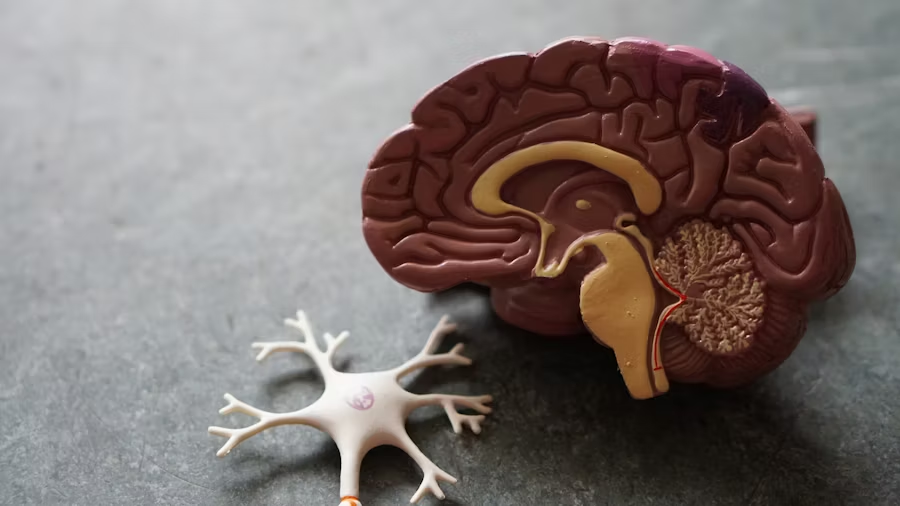
When ezetimibe was first approved in 2002, it was introduced simply as an effective adjunct for cholesterol control. What we’re learning now in 2025, thanks to compelling new research, is that this modest pill may hold far greater power — perhaps even shielding the aging brain from Alzheimer’s and other forms of dementia.
From LDL-Lowering to Amyloid-Busting
Ezetimibe’s known mechanism — blocking intestinal cholesterol absorption — makes it a valuable tool in cardiovascular health. It reduces low-density lipoprotein (LDL) by 18–20% and enhances the benefits of statin therapy. It’s also cost-effective, with generic versions priced around $20 per month. The side effect profile is mild, with occasional gastrointestinal discomfort or fatigue, and very rare muscle-related symptoms.
Researchers at the University of Arkansas for Medical Sciences (UAMS) recently made a groundbreaking discovery. Analyzing brain tissue from patients with Alzheimer’s disease, they found that ezetimibe disrupts the interaction between two proteins, hexokinase-1 (HK1) and 14-3-3 gamma, which are implicated in amyloid-like plaque formation. In both nerve cells and animal models, ezetimibe significantly reduced these harmful aggregates and stimulated the brain’s natural waste-clearing process, autophagy.
Dramatic Reduction in Dementia Risk
Perhaps even more impressive are the real-world clinical findings. In a retrospective analysis of nearly one million older adults, including over 4,300 patients on ezetimibe, those taking the drug had a seven- to eightfold lower risk of developing dementia. Among patients with coronary artery disease, the relative risk fell to just 12% of that seen in non-users.
These results surpass what has been observed with other cholesterol-lowering drugs and even with high-cost antibody therapies targeting amyloid plaques.
Why Ezetimibe Matters
Multi-Mechanism Protection: Ezetimibe not only lowers cholesterol but also interrupts the formation of toxic protein aggregates in the brain and enhances autophagy.
High Benefit, Low Risk: With over 20 years of clinical use, ezetimibe has a strong safety profile and minimal side effects.
Affordable: At less than $1 per day, ezetimibe is a viable large-scale preventive option, especially compared to costly dementia treatments and care.
Additional Health Benefits
Ezetimibe offers other advantages beyond cardiovascular and neuroprotective effects:
- Reduces oxidative stress and inflammation in preclinical studies.
- Improves endothelial function when combined with statins.
- Enhances insulin sensitivity in some models of metabolic disease.
Understanding the Numbers
While formal “number needed to treat” (NNT) data is pending, estimates suggest an NNT of about 50 over five years to prevent one case of dementia. Given the enormous financial and emotional burden of Alzheimer’s care, this represents a remarkable cost-benefit ratio.
Ideal Candidates for Ezetimibe
- Patients already taking ezetimibe for cholesterol control.
- Individuals at high risk for dementia, especially those with coronary artery disease, mild cognitive impairment, or genetic predispositions such as APOE ε4.
- Those who are statin-intolerant or need additional LDL reduction.
- Older adults seeking safe and proactive strategies for brain health.
Future Directions
UAMS is planning prospective trials to validate these findings in real time. Until those studies are completed, ezetimibe presents a compelling off-label option for patients at risk of cognitive decline.
Final Thoughts
What began as a simple cholesterol drug may now play a key role in dementia prevention. Ezetimibe is inexpensive, widely available, and supported by growing evidence that it may protect not just the heart, but the brain as well.
Physicians should consider discussing ezetimibe’s potential with patients at high risk for Alzheimer’s or other dementias, especially in the context of overall cardiovascular health.
References
- Ganne et al. (2024). Aging Biology. PMID: 39263528
- UAMS News Release. (2024). https://news.uams.edu
- Yu et al. (2020). Oxidative Medicine and Cellular Longevity.
- Dalla et al. (2009). Indian Journal of Pharmacology.
- ReachMD NeuroFrontiers Interview (2024).
- AgingCell Journal. (2024).
- MLO Online Report. (2024).
- Fortune Journals Review. (2023).
- Statin Meta-Analyses. Multiple sources, 2010–2020.
- MDPI ApoE4 and Cholesterol Metabolism Review (2023).
Leave a Reply